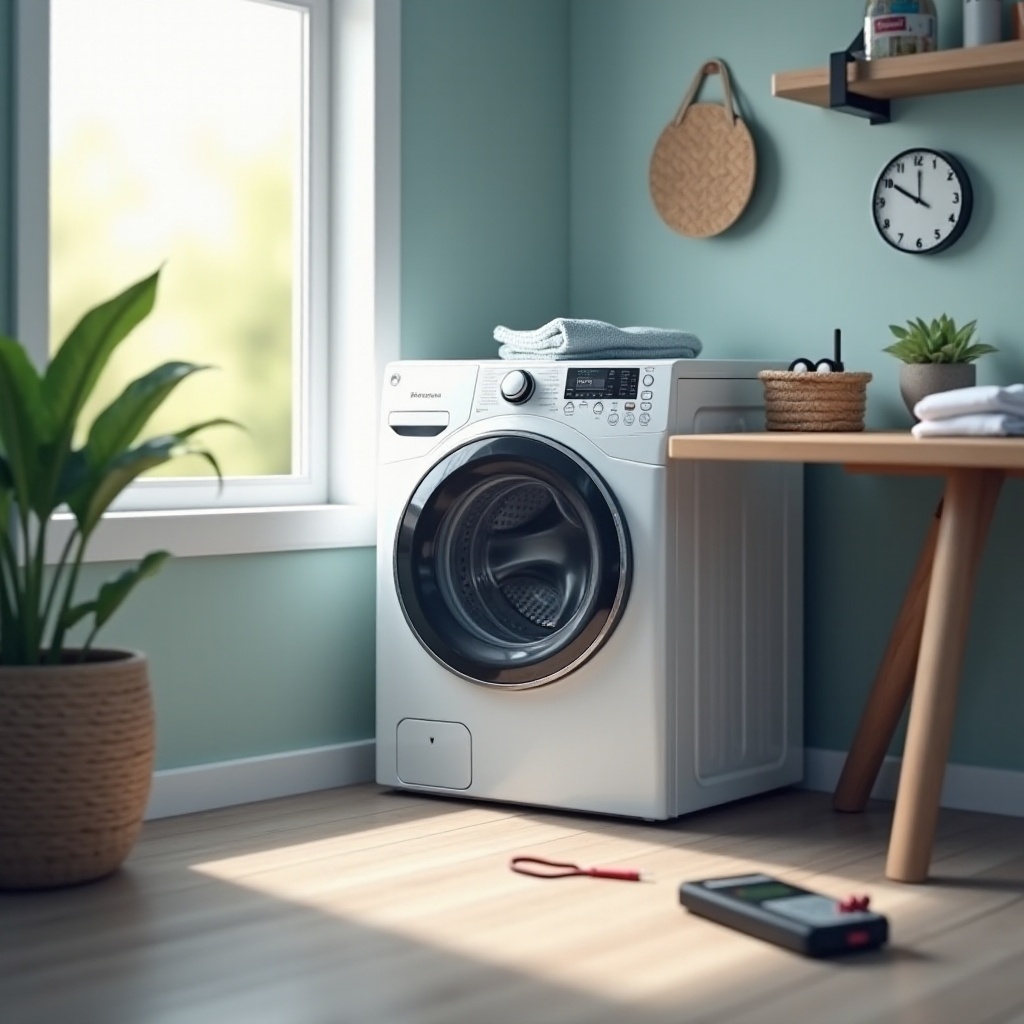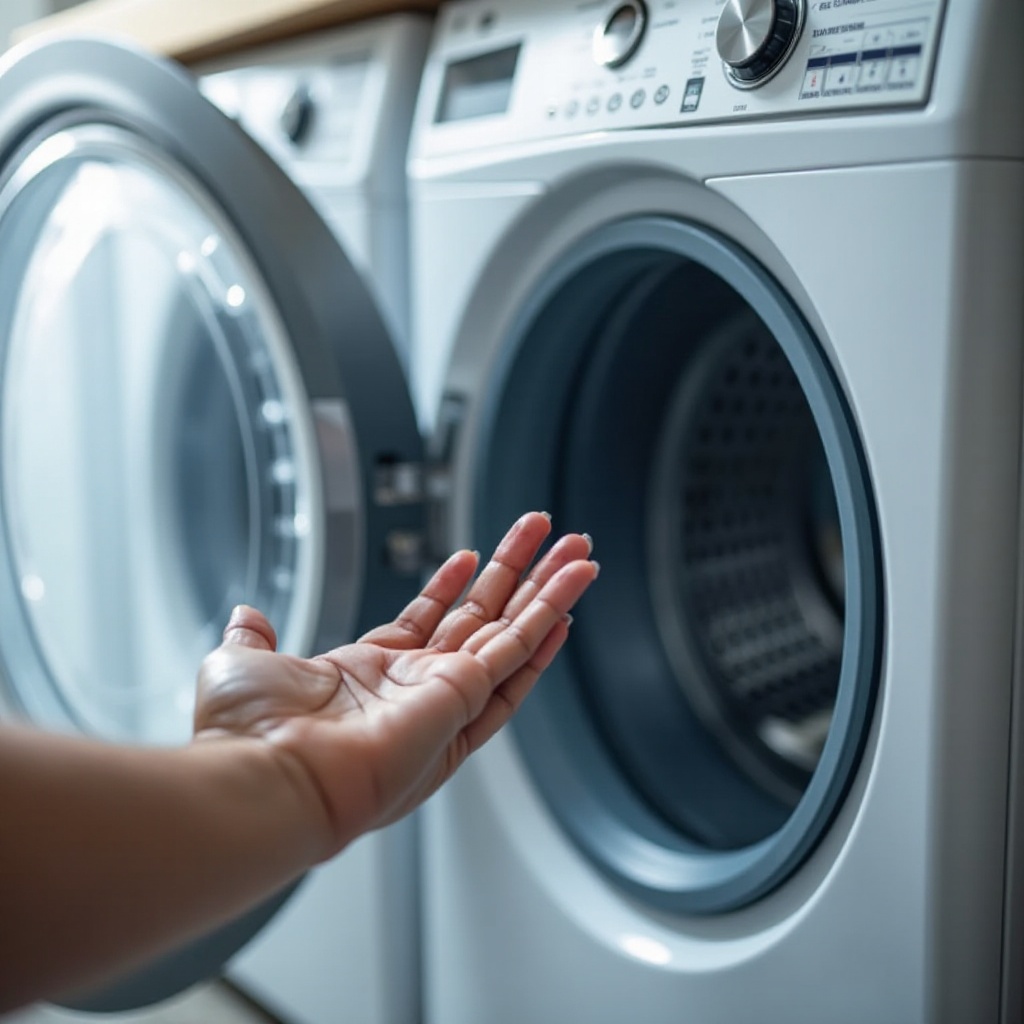Introduction
Few household annoyances match the frustration of a washer that refuses to spin. The spin cycle is essential, rapidly rotating the drum to extract water, improving cleaning and drying efficiency. When this component fails, understanding the cause can feel daunting. This guide offers practical insights and solutions to restore your washer's spin functionality, keeping your laundry routine smooth.

Understanding the Washer Spin Cycle
The spin cycle functions at the end of the wash to remove excess water from clothes using centrifugal force. A synchronized interplay of the motor, drive belt, and control system is vital. A disruption here affects the spinning capability.
Knowing how crucial a working spin cycle is to your laundry's effectiveness, it's important to address malfunctions promptly. This ensures that clothes dry quicker and remain in good condition, saving energy and extending the life of your garments.
The Basic Mechanics of Spinning in Washers
The interplay between electrical components and mechanical parts is complex. The motor, belt, control board, and switches collaborate for optimal functioning. Any failure can impair spinning.
Importance of a Proper Spin Cycle
A properly working spin cycle ensures less time in the dryer, reduced energy consumption, and preservation of fabric integrity by minimizing heat exposure.

Common Reasons Your Washer Won’t Spin
Several issues can interrupt the spin cycle. Identifying these helps you troubleshoot effectively.
Power Supply Issues
Simple power problems can halt operations:
- Ensure the plug is secure.
- Check the circuit breaker for trips.
- Test the outlet with another device.
Overloading the Washer
Too many clothes can lead to imbalance. This burdens the motor and disrupts the spin.
Faulty Lid Switch or Door Lock
A malfunctioning lid switch or door lock can prevent the washer from spinning, as it's a safety mechanism.
- Listen for a click when closing the lid.
- Inspect for visible damage or misalignment.
DIY Solutions to Fix a Non-Spinning Washer
Many fixes are simple and can be done at home with minimal tools.
Redistributing the Load for Balance
Uneven loads cause excessive movement and hinder spinning.
- Pause the washer and open the lid.
- Redistribute the clothing evenly.
- Resume the cycle.
Inspecting and Fixing the Lid Switch
If the lid switch is faulty, follow these steps:
- Unplug the washer.
- Examine for wear or damage.
- Test with a multimeter.
- Replace if needed.
Checking and Clearing Drainage Problems
Clogs in the drainage system prevent water from exiting, stalling the spin cycle.
- Inspect the drainage hose for kinks or clogs.
- Regularly clean the washer's filter.
Advanced Troubleshooting Tips
If basic fixes fail, delve deeper into washer components.
Examining the Drive Belt
A worn belt causes problems. Address it by:
- Accessing the belt through the back or underside.
- Checking for fraying or damage.
- Replacing if worn.
Inspecting the Motor Coupler
Worn motor couplers affect older machines. Evaluate by:
- Locating the coupler between the motor and drum.
- Checking for cracks.
Checking the Motor and Control Board
A faulty motor or control board hampers spinning.
- Listen for unusual motor sounds.
- Look for signs of burnt components.
When to Call a Professional Technician
If DIY fixes don’t suffice or the problem's complex, contact a professional. They possess the expertise and tools necessary for intricate repairs, ensuring your washer's longevity.
Preventative Maintenance Tips
Maintain regular checks to prevent spin issues.
Regularly Inspecting Washer Components
Look for signs of wear, like frayed belts, and replace as needed to maintain function.
Keeping the Washer Clean and Balanced
- Routinely clean filters to prevent clogs.
- Ensure the washer remains level to avoid balance issues.

Conclusion
Keeping your washer's spin cycle in peak condition is vital for effective laundry care. By addressing issues early and maintaining regular checks, you save time, energy, and avoid costly repairs, ensuring your washer's optimal performance.
Frequently Asked Questions
Why does my washer spin sometimes but not always?
This could be due to inconsistent power supply or a malfunctioning lid switch. Check connections and mechanisms when problems occur.
Can a clogged filter cause my washer to stop spinning?
Yes, drainage blockages lead to incomplete spin cycles. Regularly clean filters to prevent this.
How much laundry should I load to prevent spin issues?
Fill the washer to about three-quarters capacity, allowing space for clothes to move and distribute evenly.
